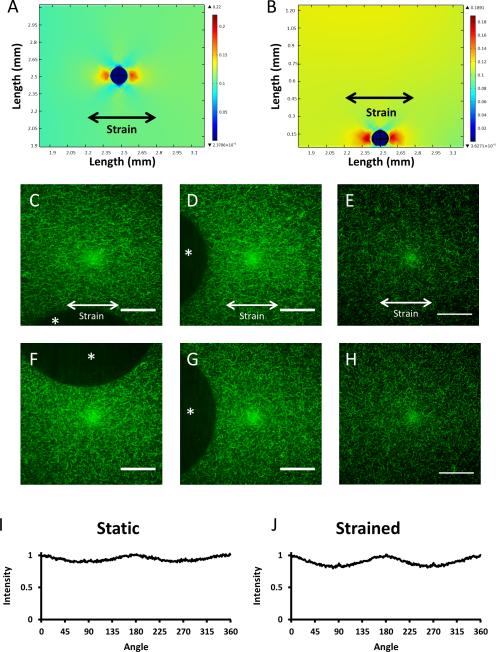Figure 6.
The effects of strain on ECM architecture. A-B. Linear elastic models of a fibrin hydrogel containing a microcarrier bead and subjected to 10% strain. In both the x-y (A) and x-z (B) planes, strain is amplified on the left and right faces of the bead, normal to the applied strain; strain is damped on the faces tangential to the applied strain. C, D, F, G. Confocal reflectance images of fibrin matrix surrounding a strained bead show modest fiber alignment when the gel is strained 10% (C,D) and random orientation when static (F,G). The asterisk in each image denotes the microcarrier bead. There appear to be no differences in matrix architecture far from any boundary condition in the strained (E) and unstrained (H) conditions. FFT Analysis (I, J) of images D and G shows a similar degree of fiber alignment in the strained and static conditions in the horizontal direction, with moderate peaks at 0, 180, and 360 degrees. Strain direction is horizontal. Images pseudo-colored green for clarity. Scale bars = 50 μm.

